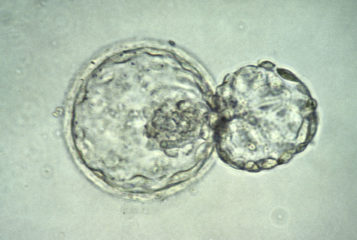Researchers this week have reported that the much debated and 'elusive' insulin-producing stem cells really do exist in the pancreas. Despite scepticism over their actual existence, stem cells that can produce beta cells were found within the pancreas of adult mice during a study at the Diabetes Research Centre at the Vrije University, Brussels and the results of the study published in the journal Cell.
Researchers found that if they damaged the pancreas in a certain way, the mice produced stem cells that could generate the beta cells. By preventing enzymes from draining away from this vital organ, an inflammatory response induced the cells to produce more insulin and spark a regenerative process. Senior researcher at the Centre, Harry Heimberg, said 'they were quite hard to find. I sometimes call them sleeping beauties as they are hard to wake up'. But wake them up they did - and as a result, their efforts may have enormous consequences for people with type 1 diabetes. The disease, which most commonly affects young people, develops when, for unknown reasons, the body's own immune system mistakenly attacks and destroys the insulin-producing beta cells in the pancreas. Affected patients have to inject themselves daily with insulin to maintain normal glucose levels in their blood.
Pancreatic beta cells can be procured from cadavers and have been used successfully in pancreatic cell transplants, but the cells are difficult to isolate, are fragile and several donors are needed for one transplant. Furthermore, attempts to programme embryonic stem cells (ES cells) into beta cells have so far proved unsuccessful. Consequently, the discovery of an alternative source of beta cells has excited the medical world. Emmanuel Baetege, chief scientific officer of Novocell, a Californian-based stem cell company, is reported by Nature as proclaiming 'It's a big discovery - I think this will heat up the whole field'. In addition, the Washington Post reports that Juan Dominquez-Bendala, director of Stem Cell Development for Translational Research at the Diabetes Research Institute of the University Miami Miller School of Medicine, said 'from a basic point of view, it's very exciting. It opens the door to potential therapies. If we could trigger regeneration, that would be fantastic'. Indeed, Heimberg is quoted in the same press report as saying, 'If this kind of cell and their progenitors with a capacity to divide exist in the pancreas of man, and if we can identify the factors that are responsible to induce their proliferation and differentiation, then these latter processes might be stimulated in vitro but also, by non-invasive means, in vivo'.
Whilst the discovery of insulin-producing cells is undoubtedly an incredible break-through in stem cell science, Heimberg also urges caution and has reiterated that any potential treatment remains far in the future.
Sources and References
-
Scientists find pancreatic stem cells in mice
-
Elusive Pancreatic Stem Cells Found In Adult Mice
-
Cell regeneration brings hope for diabetics
-
Stem Cells Finally Found in Pancreas




Leave a Reply
You must be logged in to post a comment.